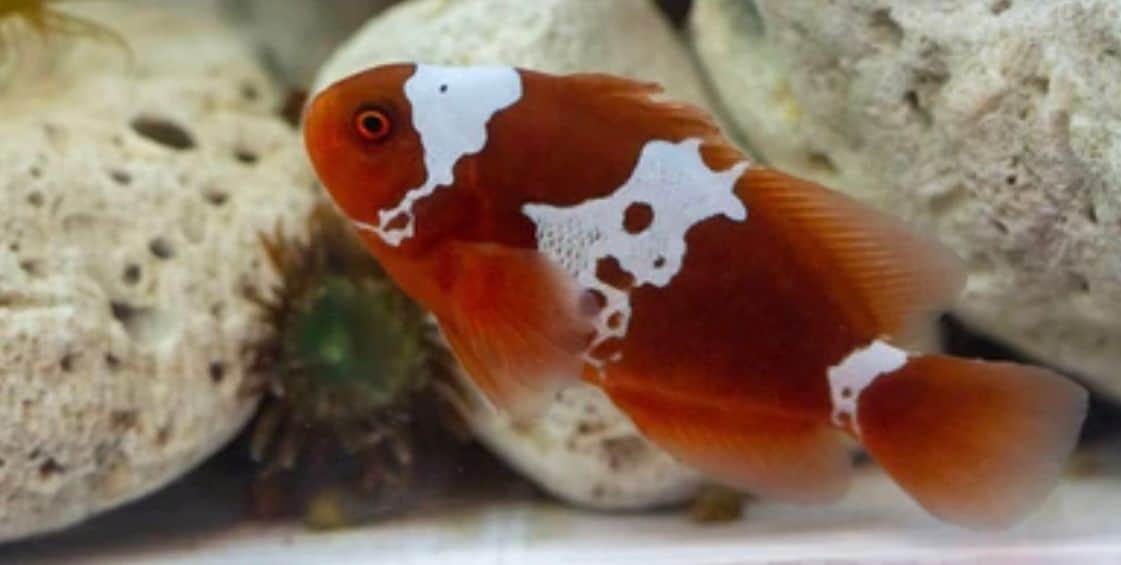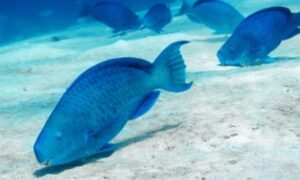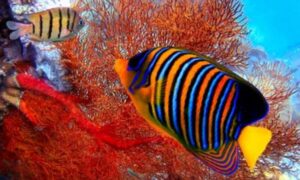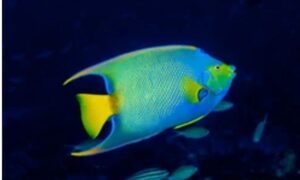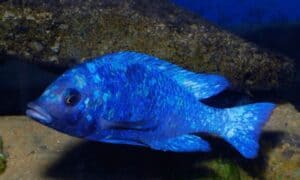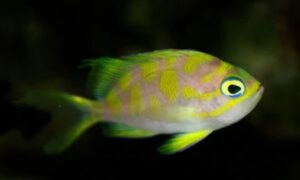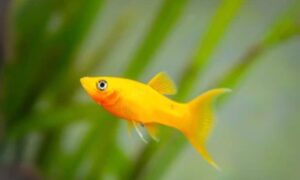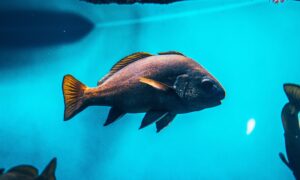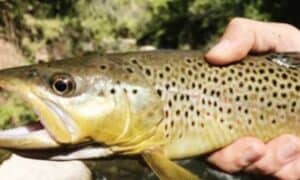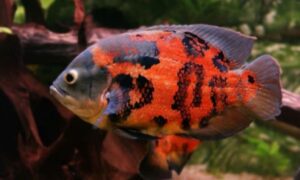Overview:
Lightning Maroon Clownfish have beautiful and distinctive “Lightning bolt” shaped patterns. As soon as these fish mature, their pigmentation and patterns will be more obvious and heightened, and will end up being darker than before, or might even change.
Lightning Maroon Clownfish species are known for their uttermost pigmentation and extra large fins also not to forget about their constructive personality. An adult Lightning Maroon Clownfish with be able to entirely mature pigmentation which is an impressive focal point fish for any home aquarium. When amalgamating these types, it’s usually best to have an extraordinary distinction in size between these individuals.
Captive-bred clownfish are very enduring and resistant fish which makes them the best addition for newcomers or even expert aquarists. Lightning Maroon Clownfish is known as a very magnificent prospect for a reef fish tank. Basically, maroon clownfish are actually the most territorial of all other clownfish species types. Maroon Clownfish are exceptionally conscious of raised levels of copper, and they ought to never ever be revealed to levels near or above.
Captive-bred clownfish are also very simple to reproduce in your home aquarium. The female specie will be the largest of the set, and two fish specie will normally remain close to each other in the fish tank. These fish are layers of eggs and will shift the eggs on a flat surface, and secure the eggs from other fish in the tank.
Their eggs are going to hatch in 8 to 11 days which depends on the temperature level.
The Lightning Maroon Clownfish species diet plan comprises products with meat that is full of protein such as frozen shrimp and herbivore preparations.
You should never move the lightning Maroon Clownfish with a net as its cheek spinal columns will result in being knotted up. If you have to want to capture, then use a specimen container.
Table of Contents
Origin and Description
The Lightning Maroon clownfish species is native to the geographically unique White Stripe range from Premnas biaculeatus. Female clownfish are able to grow up to 6 inches!
Lightning Maroon clownfish is one of the most fascinating naturally transpiring designer clownfish. These fish evolve to have exceptional stripes that appear to overflow their sides similar to lightning bolts.
Their stripes are exceedingly variable and they are able to handle any variety of tempting developments. When the fish grows up then they will end up being more darker in color, these patterns will correspondingly change and end up being more aesthetically mesmerizing.
They have a nice maroon body that consists of three special forbidden areas looking like a lightning pattern. They are quite social so they can be definitely kept in a school if the tank is large enough, however, they are known to be more truculent than the majority of clownfish species and they will eventually end up being aggressive toward the rest of the clownfish genus.
Clownfish are also reef safe and you can keep them with other calm invertebrates and corals, and many of the clownfishes will most probably host a polyp present in their tank.
The diet plan consists of a variety of live and saltwater shrimp which are high in protein along with spirulina, marine algae, nori, and algae-based foods, which should be given to them 2 to 3 times daily.
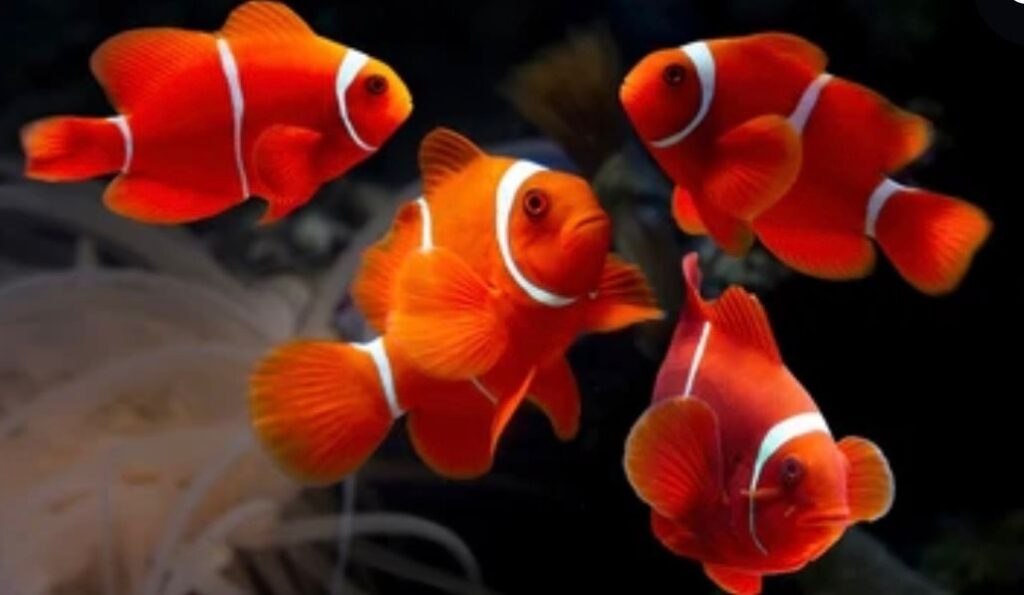
Gold Lightning Maroon Clownfish
Captive-Bred Gold Lightning Maroon Clownfish, as the name suggests, is a mesmerizing cross between the Gold Nugget and Lightning Maroon Clownfish specie.
These “designer” clownfish show considerable differences in pattern amongst those people who draw functions more from their Lightning Maroon Clownfish heritage, and others are from Gold Nugget Clownfish, while still remaining of them looking like goldflake maroon clownfish while the addition of everything in between.
Maroon Clownfish are usually liked for their utmost pigmentation and large fins not forgetting about their positive personality. When they are aiming to match these designer clownfish, the best option is to choose an individual showing a notable distinction in size between the 2 fishes.
Similarly, Like all Captive-Bred Clownfish, Lightning Maroon Clownfish are also really well-built fish customary to conditions that are discovered in home fish tanks. This attribute makes them excellent additions for nonexperienced and also experienced aquarists alike. Captive-Bred Clownfish are otherwise great addition to your reef fish tank.
They are also simple to reproduce in your home fish tank. The female specie will be the biggest amongst the set and the 2 fish will usually remain closer to each other in your fish tank. Captive-Bred Clownfish are basically egg layers and they will transfer the eggs on a flat surface area and will protect the eggs from their other tank mates.
These eggs will usually hatch in between 6 to 11 days which depends upon the temperature level of the water.
Cost of Lightning Maroon Clownfish
This seems very obvious that we’d stroll into a fish shop, and most probably see lightning maroon clownfish selling at economical, double-digit costs.
You can just find them for $60, these were no doubt the most affordable Lightning maroon clownfish you can actually buy.
Even though the excellent quality lightning maroon clownfish will display some true captive breeding artifacts and anything less as well, let’s just simply state the lower rack specimens can just be referred to as pug-faced, bulldog, freaks, etc
There is always a certain silver lining to this pressure of clownfish which can reach the rock-bottom bargain bin.
Temper & Tank Care
The Lightning Maroon Clownfish is the largest acknowledged type of clownfish and they have actually established a firm track record for its strong habits and attributes. The female specie can grow to 6 and can be in fact territorial, especially while securing a nest of their eggs.
The best option is not to blend maroon clownfish with any other clownfish types in your tank and you should just try to keep a mated set or a single fish. Maroon Clownfish that are bred in captivity are usually less hostile than those caught in the wild.
Diet
Most Maroon Clownfish have healthy eating habits. Many clownfish are omnivorous which means that they will take in a variety of food types. Naturally, the diet plan of clownfish usually includes shellfish, algae, and leftovers from the polyp’s meal and all these food types are good for their health.
Captive reproduced fish are constrained to intake a range of fish tank diet plans consisting of pellets, flake food, frozen Mysis shrimp, and frozen saltwater shrimp in order to keep them healthy.
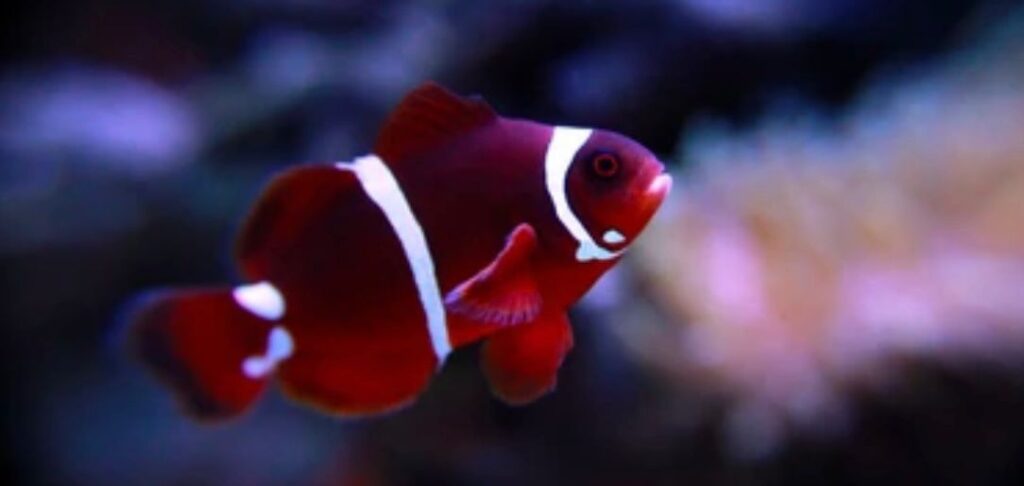
Conclusion:
- Lightning Maroon Clownfish are captivating species with distinctive lightning bolt-shaped patterns. Their pigmentation and patterns can become darker and more prominent as they mature.
- Captive-bred Lightning Maroon Clownfish are durable, resilient, and easy to reproduce, making them great additions to home aquariums for both new and experienced aquarists.
- They are reef safe and can be kept with other calm invertebrates and corals. However, they are known to be more aggressive than other clownfish species and can become territorial toward other clownfish.
- The diet should consist of protein-rich food such as frozen shrimp and herbivore preparations, as well as algae-based foods.
- The cost can vary depending on their quality and captive breeding artifacts, with the cheapest ones starting at around $60. When catching them, it is important to avoid using nets as their cheek spinal columns can become entangled.
To read more about fish care and guide please visit our website fishcaringnow.com or visit Freshwater Fish

